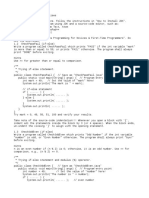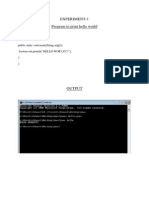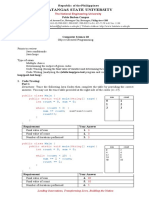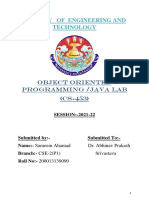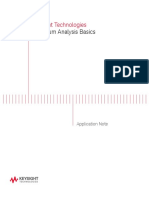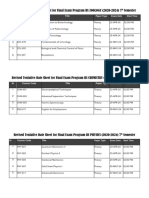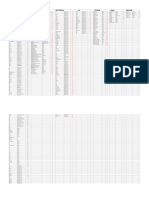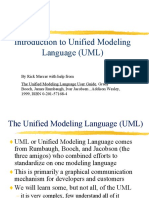0% found this document useful (0 votes)
13 views20 pagesJava Action Learning
The document outlines a series of Java programming exercises aimed at demonstrating various concepts such as variables, arithmetic operations, conditional statements, loops, exception handling, file I/O, threading, lambda expressions, and CRUD operations using JDBC. Each exercise includes a coding phase with example code, a testing phase confirming no errors, and an implementation phase showcasing the final output. Additionally, a rubric for evaluation is provided, emphasizing concepts, planning, execution, and practical simulation.
Uploaded by
uunknowns032Copyright
© © All Rights Reserved
We take content rights seriously. If you suspect this is your content, claim it here.
Available Formats
Download as PDF, TXT or read online on Scribd
0% found this document useful (0 votes)
13 views20 pagesJava Action Learning
The document outlines a series of Java programming exercises aimed at demonstrating various concepts such as variables, arithmetic operations, conditional statements, loops, exception handling, file I/O, threading, lambda expressions, and CRUD operations using JDBC. Each exercise includes a coding phase with example code, a testing phase confirming no errors, and an implementation phase showcasing the final output. Additionally, a rubric for evaluation is provided, emphasizing concepts, planning, execution, and practical simulation.
Uploaded by
uunknowns032Copyright
© © All Rights Reserved
We take content rights seriously. If you suspect this is your content, claim it here.
Available Formats
Download as PDF, TXT or read online on Scribd
/ 20
























